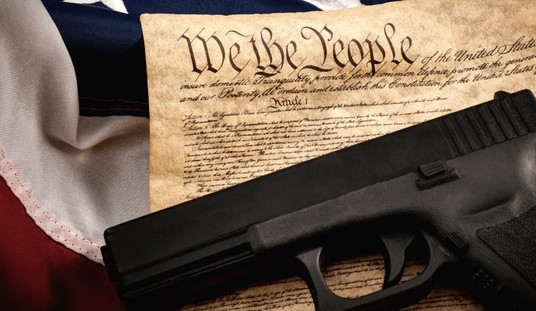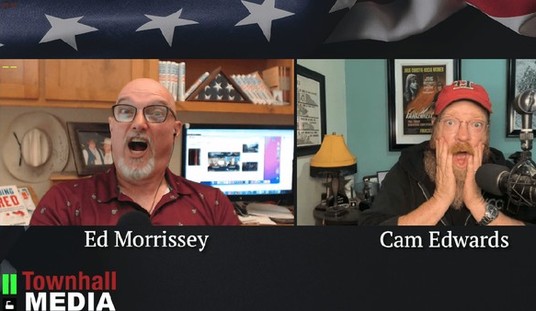For the past seventy years, astronomers have debated the theory that the universe was created about fourteen billion years ago in an enormous explosion of super-dense, superheated matter. This idea has come to be known as the “Big Bang” theory. As important as it is, this is not the only Big Bang theory out there. Other scientists, those who specialize in handgun ballistics, have also developed theories about explosions of super-dense, superheated matter. These eminent theorists believe that when it comes to the issue of self defense with a handgun, the bigger the bang the better, and the more super-dense, superheated matter you can launch, the better your odds of survival. While at the range recently, I met a fellow shooter who wholeheartedly subscribes to this theory, and he invited me to try one of his carry guns.
The origins of the Other Big Bang Theory can be traced back to the 1920s. It was a time when one of the foremost proponents of the theory, Elmer Keith, was doing early research into pushing a very big bullet, at very high velocity, from a handgun. Keith had long favored the .44 Special, a round which, by the 1920s, already had a respectable family history. The ancestors of the .44 Special are Smith & Wesson’s .44/100 (the “.44 American”) and later the .44 Russian, both developed in the decade following the Civil War. Later, S&W modified the .44 Russian, lengthening the case, loading it with smokeless powder and naming it the .44 Special. Introduced in 1908, its inherent accuracy made it a hit with target shooters, but it was a slow round, clocking only 750 feet per second, the same speed as its black-powder ancestor.
 |
Keith saw potential in the .44 Special and began to develop faster loads for it. Over the course of two decades he perfected a .44 Special load that pushed a 250 grain bullet at 1200 feet per second. After WWII, Keith began in earnest to try to convince the US arms industry to produce a round of the type that he had developed. In 1950, Smith & Wesson and Remington finally began to collaborate on what came to be known as the “.44 Magnum”, and In 1955, the first .44 Magnum revolver came off the Smith & Wesson production line. Sporting a six inch barrel, and delivering a 240 grain bullet at 1500 feet per second, it took the shooting world by storm. Shortly afterwards, Keith convinced Smith & Wesson to offer the revolver with a 4” barrel for law enforcement use, and the Other Big Bang Theory began to steadily attract supporters.
But despite its growing popularity in the years since 1955, the Other Big Bang Theory has drawn the attention of those who found fault with it. Some advocated a Slightly Less Big Bang. This school of thought produced rounds like the .41 Magnum and 10mm. Others thought that a Bigger Bang was needed. These are the advocates of rounds such as the .454 Casull, .475 Linebaugh, .480 Ruger and .500 Smith & Wesson. But through it all, and not without the help of Clint Eastwood’s immortal character “Dirty Harry” Callahan, the .44 Magnum has remained the brightest star in the Other Big Bang galaxy.
Despite its mythic status and awe-inspiring ballistics, the .44 Magnum never really caught on big with either police departments or civilian shooters needing a concealed carry gun. This might have something to do with its considerable weight and bulk, or maybe its whopping recoil. Who knows? At any rate, its dedicated carry-gun followers have always been on the rare side. This is why, when I went to the range and saw a guy two stations down from me with a 2.5” Smith & Wesson Model 29, I was drawn to it like a moth to a flaming muzzle.
Now I don’t know what folks are like where you live, but here in Texas if you stand drooling and staring at a man’s handgun while you’re at the range, and he doesn’t offer to at least let you fondle it, he’s considered aloof and standoffish at best, and downright rude and ill-mannered at worst. Fortunately, those types tend to be rare, and many times an admiring word and glance will lead to an invitation to put a few rounds through the object of interest. As is often the case, when this fellow saw me watching him we struck up a conversation that led to an invitation to shoot the short-coupled little monster.
Now let me state at the outset that when it comes to the .44 Magnum, this was not my first rodeo. I have owned several .44 Magnum revolvers, and it is a round that I enjoy shooting. That said, until then I had never shot anything that produced a muzzle flash that ignited my eyebrows. Fortunately, the lady shooter at the station on my left had the presence of mind to quickly toss her Diet Coke in my face, and the range master kindly offered me some Cosmoline to salve my burns. Once my face had stopped smoldering and I had put on some sunglasses, it was smooth sailing.
 |
At this point, if you’re a Smith & Wesson aficionado, you’re thinking “Smith never made a 2.5” Model 29”, and you’re right. What this Other Big Bang devotee had brought to the range that day was a “Combat Mini .44 Magnum Conversion” by Mag-Na-Port, Inc. Mag-Na-Port, best known for its recoil-reducing barrel porting, also offers a full range of finishing, polishing and tuning work. The Combat Mini is a full-blown combat / carry package. Mag-Na-Port starts by reshaping the grip frame to round butt K-frame dimensions. The forcing cone is recut, the barrel is shortened to 2.5” and recrowned, and ports are cut into it near the muzzle. The front sight is remounted, and a third lock is installed at the top of the crane. The trigger face is rounded and polished, and the hammer spur and rear sight are rounded. The action is tuned, and Wolff springs are installed. Finally, a brushed hard chrome finish called Mag-Na-Life is applied.
The final product is one mean-looking hard-kicking fire-breathing package, but boy is it fun to shoot. With the superb action job by Mag-Na-Port, and the recoil-reducing barrel ports, the little beast is capable of some very respectable accuracy. The owner generously allowed me eighteen rounds, fired at seven yards, all of which I was able to keep inside about six inches while firing double action with a two-handed hold.
I don’t know for sure how the universe was created, but when it comes to the Other Big Bang Theory, I think I’m a believer.









Join the conversation as a VIP Member